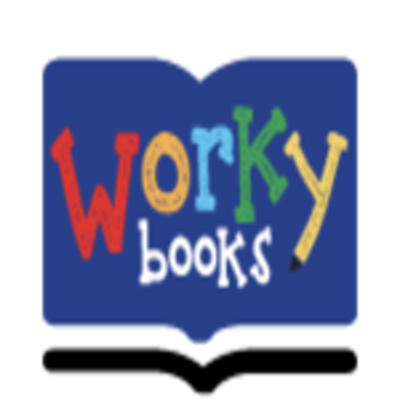Free Printable Resources to Teach Decimals in Grades 3–5
 Workybooks
WorkybooksDecimals are an important topic in math for students in grades 3 to 5. At this stage, students begin to work with parts of numbers, build on what they know from fractions, and connect decimals to real-life situations like money. Teaching decimals step by step helps students understand place value, comparison, operations, and more.
With the right resources—like worksheets, hands-on activities, and blended tools—students can learn decimals in a fun and simple way. Here's how to approach decimals in the classroom or at home using free resources.
Understanding the Link Between Fractions and Decimals
A great place to start is by helping students see how decimals are related to fractions. For example, 0.5 means 5 tenths, which is the same as the fraction 1/2. Visual tools like grids or number lines can help make this connection easier for kids.
The fractions and decimals gives students clear examples of how numbers like 0.25 and 0.75 can be written as fractions and helps them understand the value of decimals through pictures and practice.
Building Decimal Understanding with Place Value
Place value is the foundation for working with decimals. Students should learn that digits to the right of the decimal point represent tenths, hundredths, and thousandths. Understanding this makes it easier to round decimals and work with them in real-world problems.
To practice rounding, the Place value with decimals worksheet offers step-by-step questions where students round numbers to the nearest tenth using clear directions and examples.
Comparing Decimals with Confidence
Once students know the value of decimals, they can begin comparing them. A common mistake is thinking that 0.9 is smaller than 0.75 because 9 is less than 75. Visual models and number lines are helpful tools for comparing decimal values.
The Comparing Decimals worksheet uses these strategies to help learners practice comparing different decimal numbers and explain their thinking using math words like “greater than” or “less than.”
Making the Most of Blended Learning
Using both online and offline activities is called blended learning. It allows students to practice on paper and with digital games or tasks. This approach supports all learning styles. Students can complete a worksheet in class, then use a learning app at home to review the same skill in a new way. Teachers can also track progress more easily using digital tools.
Ordering Decimals from Smallest to Greatest
Ordering decimals helps students think more deeply about place value. To do this, they must look at digits in the tenths, hundredths, or thousandths places and line up numbers correctly before comparing them.
The Ordering Decimals worksheet gives students real-world tasks like ordering prices, temperatures, or measurement data from smallest to largest, helping them apply their learning in a meaningful way.
Adding and Subtracting Decimals Step by Step
Once students understand decimals, they’re ready to add and subtract them. This skill is useful for solving word problems, managing money, and measuring. Teach students to line up decimal points and fill in empty places with zeros when needed.
The Adding and Subtracting decimals worksheet provides clear instructions and practice problems that build accuracy and confidence in this area.
Teaching Division with Decimals
Dividing decimals can be tricky, so it helps to take it slow. Start by reviewing whole-number division. Then, teach students how to move the decimal point and explain why it happens. Using real-life examples like dividing money or measurements can make the lesson more relatable.
The Dividing decimals worksheet allows students to work through practice questions and understand how to use decimals in division step by step.
Connecting Decimals to Money
Money is one of the best ways to teach decimals. Dollars and cents are familiar to students and show how decimals are used every day. Students can practice adding prices, subtracting totals, or rounding to estimate cost.
The decimals to money worksheet includes simple money problems that help kids connect classroom math to real-life spending and saving situations.
Tips for Teachers and Parents
Use visual tools like base-ten blocks, grids, and number lines to explain decimals
Start with small numbers and build up to more complex ones
Use games and partner activities to keep practice fun
Connect decimals to real life through shopping, measuring, or baking
Mix printable worksheets with digital activities for better engagement
Conclusion
Decimals are a big part of learning math in grades 3 to 5. Students begin by connecting decimals to fractions, then move on to place value, comparing, ordering, and operations. Using fun and clear worksheets, real-world examples, and a mix of paper and digital practice makes learning decimals easier for everyone.
To help your students succeed, visit Workybooks for helpful tools. Explore hundreds of digital worksheets to support learning at home or in the classroom, and make decimals simple, useful, and fun for all.
Subscribe to my newsletter
Read articles from Workybooks directly inside your inbox. Subscribe to the newsletter, and don't miss out.
Written by
